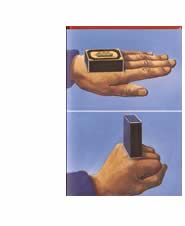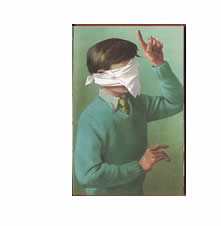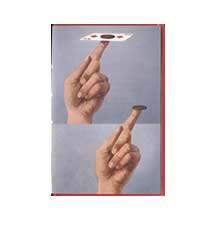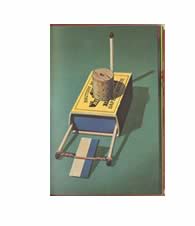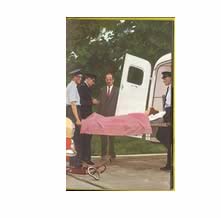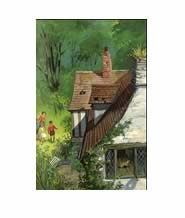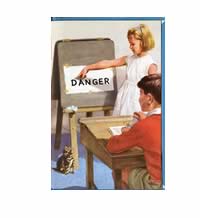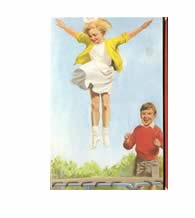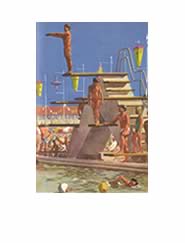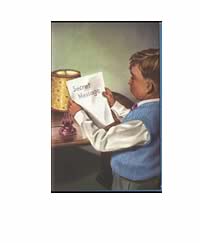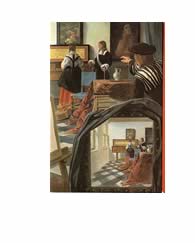Top
row - Robert Ayton, from Tricks and Magic 1969;
last from Toys and Games We Make 1966.
Second
Row - John Berry, from The Nurse 1963; Martin Aitchison
from Games We Like 1964; J.H.Wingfield, Things
We Do 1964; Robert Ayton, from Boys and Girls 1964
Third
Row - John Berry. from Cub Scouts 1970; J.H.Wingfield,
from The Holiday Camp Mystery 1966; G.Robinson Things
to Make 1963; Martin Aitchison, from Great Artists 1970
These
are individual images extracted from their sequences within the
books, taken away from the explanatory texts printed opposite. Unfair?
Oh yes, but the isolation intensifies the solidity, the dignity,
the 'Chinese pitch of oddity'. I admire the quality of paint that
is dead to the touch. Magritte, Jared French, Joseph Southall etc.
There is no need for shimmering brushstrokes, and the cult of painting a
premier coup.
The compositions are predictable within the house style, but full
of a chilled formality which I find oddly appropriate for the reminiscences
of childhood. Particularly magical are the semi-educational illustrations
of magical tricks performed by infants of considerable gravity.
Quickness of hand? Not here. A slow and steady passage of objects
from one dimension to another.
It is
lazy thinking to believe that the illustrators worked 'with tongue
in cheek'. I hope they didn't. It would undermine the ritalistic
nature of the scenes, the loading of the ambulance, the parade of
swimmers, the point of view of Vermeer's camera obscura, the perpetually
hovering moppet against a clear summer's sky.
There
are objections made on a regular basis that the Ladybird books did
not represent the nation as a whole, the poverty and lack of opportunity
of the working classes, the new ethnic majorities, the presence of
crime and nuclear anxieties. All this is true for those of
you who believe the primary role of the books is to instruct and
reinforce the nature of Society.
I would
counter that the books accurately reflect my life in Handforth and
Watford. And even when they don't, provide a magical prism with
as much terror as nostalgia. Watching David Lynch's films there
are moments when a gesture or an inanimate object take on a particular
significance for which you just can't give account.
In the
three galleries I will attach the texts to the images so you don't
feel thwarted.The oddness of message and atmosphere is sustained
over the double page.
Champfleury
declared Pre-Raphaelite paintings as images of "a Chinese pitch
of oddity" (c1859), an admirable perspective given his limited exposure
to English painting. |




